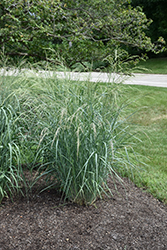It's all about ...
plants

Coastal Switch Grass
Panicum amarum 'Atlantic'
Height: 5 feet
Spread: 30 inches
Sunlight:
![]()
![]()
Hardiness Zone: 8a
Other Names: Coastal Panic Grass, Switchgrass, Panicgrass
Description:
A clump forming native grass found on coastlines that are sunny, sandy, dry, and infertile; does best in these conditions; but will also thrive in average to loamy soils if there is good drainage; very wind and salt tolerant; great for erosion control
Ornamental Features
Coastal Switch Grass features airy plumes of tan flowers rising above the foliage in late summer. Its attractive grassy leaves are steel blue in colour with hints of grayish green. As an added bonus, the foliage turns a gorgeous gold in the fall. The tan seed heads are carried on showy plumes displayed in abundance from late summer to mid fall. The tan stems can be quite attractive.
Landscape Attributes
Coastal Switch Grass is an herbaceous perennial grass with an upright spreading habit of growth. Its relatively fine texture sets it apart from other garden plants with less refined foliage.
This is a relatively low maintenance plant, and is best cut back to the ground in late winter before active growth resumes. It has no significant negative characteristics.
Coastal Switch Grass is recommended for the following landscape applications;
- Accent
- Mass Planting
- General Garden Use
- Groundcover
- Naturalizing And Woodland Gardens
Planting & Growing
Coastal Switch Grass will grow to be about 4 feet tall at maturity, with a spread of 30 inches. It tends to be leggy, with a typical clearance of 1 foot from the ground, and should be underplanted with lower-growing perennials. It grows at a medium rate, and under ideal conditions can be expected to live for approximately 15 years. As an herbaceous perennial, this plant will usually die back to the crown each winter, and will regrow from the base each spring. Be careful not to disturb the crown in late winter when it may not be readily seen!
This plant does best in full sun to partial shade. It is very adaptable to both dry and moist growing conditions, but will not tolerate any standing water. It is considered to be drought-tolerant, and thus makes an ideal choice for a low-water garden or xeriscape application. This plant does not require much in the way of fertilizing once established. It is particular about its soil conditions, with a strong preference for sandy, alkaline soils, and is able to handle environmental salt. It is somewhat tolerant of urban pollution. This is a selection of a native North American species. It can be propagated by division; however, as a cultivated variety, be aware that it may be subject to certain restrictions or prohibitions on propagation.
This plant is not reliably hardy in our region, and certain restrictions may apply; contact the store for more information.
